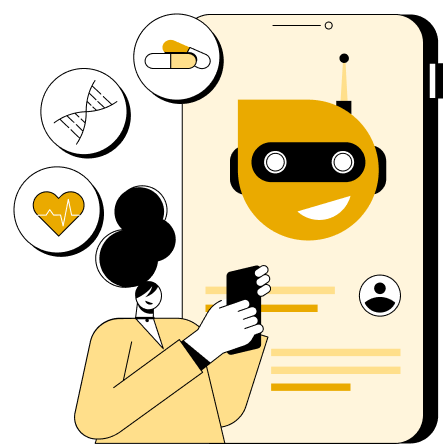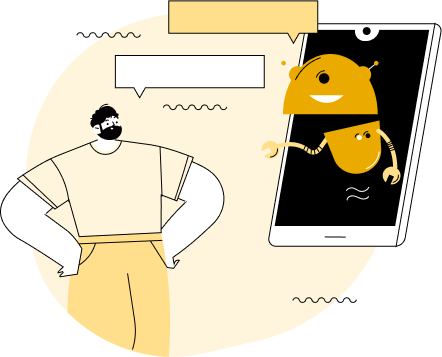- A Glimpse into the ERP AI Chatbot: The Holy Grail of Modern Business Operations
- Types of ERP AI Chatbot: Choosing the Right Fit for Your Business
- 1. Informational ERP AI Chatbot
- 2. Transactional ERP AI Chatbot
- 3. Conversational ERP AI Chatbot with NLP
- 4. Voice-Enabled ERP AI Chatbot
- 5. Hybrid ERP AI Chatbot
- Key Benefits of ERP AI Chatbot Development for Businesses
- Use Cases of ERP AI Chatbot Systems
- 1. Order Status Tracking
- 2. Inventory Management Assistance
- 3. Automated Invoice Status Queries
- 4. Leave and HR Requests
- 5. Procurement Status Updates
- 6. Production Planning Insights
- 7. Sales Forecasting Support
- 8. Expense Management
- 9. Real-Time KPI Monitoring
- 10. IT Support for ERP Navigation
- Features of an ERP AI Chatbot
- Steps to Develop a High-Performance ERP AI Chatbot
- 1. Define Business Objectives and Use Cases
- 2. Select the Right ERP AI Chatbot Type
- 3. Choose the AI Chatbot Platform for ERP Integration
- 4. Map ERP Processes and Data Flows
- 5. Design Conversational Flows and User Interactions
- 6. Ensure Data Security and User Permissions
- 7. Develop and Train the ERP AI Chatbot
- 8. Test for Workflow Accuracy and User Experience
- 9. Deploy and Monitor Chatbot Performance
- 10. Continuously Improve Based on Feedback and Data
- Challenges of ERP AI Chatbots: What to Expect and How to Overcome Roadblocks
- Future Trends of ERP AI Chatbots: What’s Next for Enterprises?
- 1. Hyper-Personalization in ERP AI Chatbots
- 2. Voice-First ERP Interactions
- 3. Proactive ERP AI Chatbots with Predictive Insights
- 4. Seamless Multi-System Integration
- 5. Low-Code ERP AI Chatbot Development
- 6. AI Chatbot-Driven Workflow Orchestration
- Why Appinventiv is the Right Partner for Developing AI-Powered ERP AI Chatbots?
- FAQs
Key takeaways:
- ERP AI chatbots turn slow, manual ERP tasks into instant, automated actions.
- Real-time data, voice commands, and multi-system access make ERP chatbots a game changer.
- Leading brands like H&M, Unilever, and PepsiCo are already leveraging ERP AI chatbots.
- AI chatbots improve user adoption by simplifying complex ERP navigation.
- Challenges like integration, scalability, and user resistance can be solved with the right partner.
- The future of ERP AI chatbots is hyper-personalization, predictive alerts, and low-code agility.
You’ve probably noticed it by now—no matter how robust your ERP system is, your teams still chase updates, wait on approvals, and manually dig for data they should already have. The ERP isn’t broken. It’s just not built for the speed your business now demands.
That’s where ERP AI chatbots are quietly changing the game. They’re not just add-ons—they’re actively working behind the scenes in leading businesses, answering queries, handling repetitive tasks, and making ERP systems feel as simple as a conversation. This isn’t a solution for tomorrow. It’s already happening, with businesses actively exploring ERP AI chatbot development to automate and simplify their workflows.
An ERP AI chatbot can help your teams place orders, track shipments, approve invoices, or get inventory updates—instantly. No more system hopping, no more lag. It’s like giving your ERP system a voice that’s always ready to respond. For businesses, this means faster workflows, fewer mistakes, and better decisions—without the usual back-and-forth.
In this blog, you’ll find everything you need to know about ERP AI chatbots—what they are, how they work, why they’re becoming essential, the types of ERP AI chatbot available, and how to make them work for your business. We’ll cover use cases of ERP AI chatbot systems, key benefits, common challenges, and even walk you through the steps of building a high-performance ERP AI chatbot. Let’s break it down simply, so you can start seeing the real value today.
We can help you- Stay ahead and automate faster.
Make your ERP work for you—starting now.
A Glimpse into the ERP AI Chatbot: The Holy Grail of Modern Business Operations
Imagine your ERP system not just processing data, but actively anticipating needs and handling tasks without waiting on human intervention. That’s exactly what ERP AI chatbots are bringing to the table. These smart assistants are redefining ERP systems by embedding AI chatbots directly into the core workflows.
Today, with the integration of AI chatbot for ERP, businesses can streamline operations, reduce friction, and accelerate decision-making. From handling repetitive tasks like data entry and inventory tracking to answering real-time queries, an ERP AI chatbot essentially gives your ERP system a voice that works 24/7—no human intervention required. Many companies are now focusing on automating ERP with AI chatbots to improve response times and free up valuable employee hours.
But how exactly is AI revolutionizing the way we interact with ERP systems? The AI chatbot for ERP is designed to make your business smarter, faster, and more agile. By leveraging advanced natural language processing (NLP), these systems understand user needs, instantly retrieving and presenting relevant information, or even executing tasks autonomously. As part of the features of ERP AI chatbot systems, this seamless interaction is a key differentiator.
According to McKinsey, 21% of organizations have already redesigned their workflows with generative AI, dramatically boosting productivity and operational efficiency. In fact, McKinsey estimates that AI could unlock $4.4 trillion in productivity growth across corporate use cases—an opportunity businesses cannot afford to ignore.
As companies seek faster and more agile ERP solutions, BCG points out that ERP systems, while valuable, often come with challenges such as complexity and cost overruns. However, the integration of ERP AI chatbots is a game-changer. It’s estimated that AI can reduce the effort required for ERP implementation by 20% to 40%, making ERP systems more efficient, adaptable, and accessible than ever before.
For businesses aiming to stay ahead of the curve, investing in AI chatbot platforms for ERP isn’t just an option—it’s a strategic move. This investment can drive growth, streamline operations, improve decision-making, and reduce ERP implementation time and cost.
Types of ERP AI Chatbot: Choosing the Right Fit for Your Business
Not every ERP AI chatbot works the same way. Depending on what your business needs—whether it’s faster answers, automated workflows, or voice-enabled support—there’s a specific type of chatbot that fits the job. Here’s a quick look at the main types of ERP AI chatbots businesses can adopt:
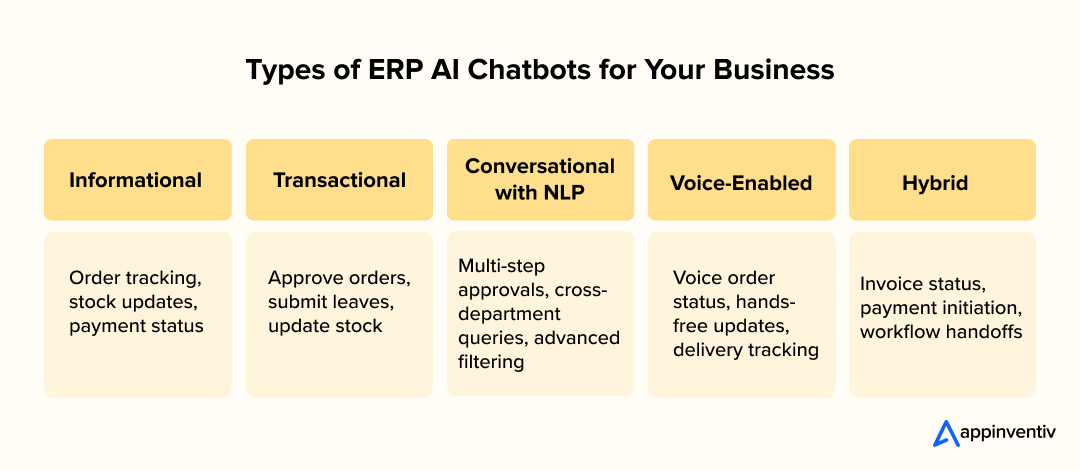
1. Informational ERP AI Chatbot
This chatbot type focuses on retrieving real-time information from the ERP system. It helps users quickly check order statuses, stock availability, delivery timelines, payment due dates, and other day-to-day queries without navigating complex dashboards.
Typical Interaction Example:
“What’s the current stock level of Product X in Warehouse A?”
The chatbot instantly pulls the data from the ERP system and shares the live stock count in seconds.
2. Transactional ERP AI Chatbot
This type doesn’t just answer questions—it performs actions. Whether it’s approving purchase orders, submitting leave requests, updating stock, or generating invoices, a transactional chatbot is built to automate tasks directly from the ERP system.
Typical Interaction Example:
“Approve Purchase Order 1523 and update the stock accordingly.”
The chatbot confirms the approval, updates the inventory, and notifies the concerned team, all within the same chat flow.
3. Conversational ERP AI Chatbot with NLP
Using advanced natural language processing, this chatbot understands context, handles multi-step conversations, and guides users through complicated workflows like multi-level approval processes or cross-departmental queries.
Typical Interaction Example:
“Show me all pending purchase orders from the last two weeks that need CFO approval.”
The chatbot identifies the date range, filters the purchase orders, and displays a ready-to-review list without the user needing to provide additional details.
4. Voice-Enabled ERP AI Chatbot
This type integrates voice commands to make ERP systems accessible hands-free. Perfect for employees working in plants, warehouses, or remote sites where typing isn’t always practical.
Typical Interaction Example:
“What’s the next delivery scheduled for Plant 3?”
The chatbot instantly responds with the delivery details through voice, allowing on-ground staff to continue working without interruption.
5. Hybrid ERP AI Chatbot
A combination of informational and transactional capabilities, this chatbot type offers flexibility—handling queries, processing transactions, and transferring more complex tasks to human agents when needed.
Typical Interaction Example:
“What’s the invoice status for Vendor A? If approved, initiate the payment.”
The chatbot checks the approval status, confirms payment initiation, and logs the transaction back into the ERP system, creating a seamless end-to-end workflow.
Key Benefits of ERP AI Chatbot Development for Businesses
Implementing ERP AI chatbots is no longer just a nice-to-have—it’s becoming essential for businesses aiming to improve speed, accuracy, and employee productivity. Here are the core benefits that make ERP AI chatbots a smart investment.
| Benefit | Description |
|---|---|
| Faster Workflow Automation | By automating ERP with AI chatbots, businesses can speed up repetitive tasks like order tracking, invoice approvals, and procurement status updates. This reduces manual workload and accelerates business processes. |
| Real-Time Data Access | AI chatbot for ERP allows the teams to instantly fetch live data such as inventory levels, order statuses, and sales forecasts. This improves decision-making speed and reduces dependency on manual reports. |
| Improved User Adoption | ERP AI chatbot solutions development focuses on making ERP systems more accessible and conversational, encouraging wider adoption among employees who may otherwise find ERP systems complex. |
| Cost Savings Across Departments | The ERP AI chatbot development cost is often offset by the operational savings it delivers through reduced errors, faster processing, and fewer support tickets across finance, HR, and procurement. |
| Enhanced Customer Satisfaction | Faster internal processes driven by ERP AI chatbots lead to quicker customer responses and better service levels, directly impacting customer satisfaction and loyalty. |
| 24/7 Availability | ERP AI chatbots work around the clock, allowing employees to access ERP systems and resolve routine queries even outside of regular working hours. This is especially beneficial for global businesses. |
| Seamless ERP Navigation | One of the key features of ERP AI chatbot systems is the ability to guide employees through complex ERP workflows, reducing confusion and minimizing the need for IT support. |
| Scalable Process Automation | ERP AI chatbot development allows businesses to easily scale their process automation across multiple departments, geographies, and user groups without overloading support teams. |
| Integration Flexibility | AI chatbot platforms can connect seamlessly with existing ERP systems, enabling businesses to automate tasks without needing to overhaul their entire infrastructure. |
| Reduced Dependency on IT Teams | The role of AI chatbots in ERP systems includes guiding employees in real-time, reducing the number of ERP-related support tickets and freeing IT teams to focus on high-impact tasks. |
Use Cases of ERP AI Chatbot Systems
ERP AI chatbots are transforming how businesses interact with their ERP systems. By automating tasks and simplifying access to information, they help teams work faster, reduce dependency on manual operations, and minimize system bottlenecks. Here are practical use cases of ERP AI chatbot systems that are already creating measurable impact:

1. Order Status Tracking
AI chatbot for ERP can help employees track orders in real time without digging into complex ERP dashboards. Sales and customer support teams can ask the chatbot for live shipment status, expected delivery dates, pending approvals, or delays in the order cycle. This eliminates the need for manual follow-ups with other departments and improves both internal coordination and customer communication. By simplifying order tracking, businesses can reduce turnaround times and enhance customer satisfaction.
Example:
H&M uses ERP AI chatbot to track global supply chain movements and provide real-time order updates to internal teams and customers, improving both delivery accuracy and communication speed.
2. Inventory Management Assistance
Automating ERP with AI chatbots significantly simplifies inventory management. Procurement and warehouse teams can quickly check stock availability, monitor real-time consumption, receive alerts on minimum stock levels, and get proactive restock reminders, all through conversational queries. The AI chatbot can also notify teams about inventory discrepancies or incoming shipments. This instant access helps prevent stockouts and reduces overstocking, which are common pain points in supply chain management.
Example:
Unilever leverages AI chatbot for ERP to empower procurement teams with instant stock-level visibility across multiple warehouses, enabling timely replenishment decisions and reducing supply chain disruptions.
3. Automated Invoice Status Queries
AI chatbot for ERP can automate invoice status updates, allowing employees to instantly access information related to invoice approvals, payment schedules, outstanding dues, and vendor details. This reduces the workload on finance teams and eliminates the need to manually track payment cycles. It’s a practical way to accelerate cash flow management and minimize vendor disputes.
Example:
GE Vernova integrated ERP AI chatbots to manage invoice queries at scale, enabling finance operations to resolve vendor issues faster and significantly reducing internal approval delays.
4. Leave and HR Requests
One of the most common applications demonstrating the role of AI chatbots in ERP systems is in HR process automation. Employees can interact with the chatbot to check leave balances, apply for leaves, view upcoming holidays, and get instant responses to policy-related questions. This reduces the dependency on HR teams for routine queries, improves employee experience, and speeds up leave approval workflows.
Example:
Coca-Cola uses AI chatbots within their ERP to automate HR-related queries, reducing HR ticket volumes and enabling faster self-service for thousands of employees worldwide.
5. Procurement Status Updates
With ERP AI chatbots, procurement teams can instantly receive updates on purchase order status, supplier confirmations, expected delivery timelines, and pending approvals—all in one conversation. This eliminates the common bottlenecks of waiting for email responses or checking multiple ERP modules. It ensures that procurement cycles move swiftly and supplier relationships remain well-managed.
Example:
Siemens adopted ERP AI chatbots to automate procurement status tracking, providing seamless communication between sourcing teams and vendors, which improved on-time deliveries and reduced manual follow-ups.
6. Production Planning Insights
ERP AI chatbots can offer real-time access to production schedules, raw material availability, equipment maintenance status, and capacity constraints. Understanding the types of ERP AI chatbot is essential to select the right one that can manage production workflows. By automating ERP data retrieval in manufacturing, businesses can quickly adjust production timelines, reduce downtime, and avoid last-minute disruptions.
Example:
Bosch uses ERP chatbots on their production floors to offer real-time manufacturing schedules and inventory data, helping plant managers make immediate decisions that improve production efficiency.
7. Sales Forecasting Support
One of the valuable features of ERP AI chatbot systems is their ability to assist sales teams with instant access to sales forecasts, real-time revenue data, regional performance metrics, and customer order histories. This helps sales managers identify trends, plan inventory more precisely, and make faster, data-backed decisions without generating manual reports or waiting for analytics teams.
Example:
PepsiCo uses ERP AI chatbots to empower sales managers with instant forecasting data, enabling better demand planning and ensuring product availability across regions.
8. Expense Management
Automating ERP with AI chatbots can significantly simplify the employee expense process. Employees can track expense claim statuses, get instant policy clarifications, and even submit new expenses through the chatbot. This reduces approval timelines and improves finance team productivity by lowering the volume of manual checks and emails.
Example:
IBM uses ERP AI chatbots to streamline employee expense tracking, allowing their global teams to monitor expense statuses and receive real-time policy guidance without escalating routine queries.
9. Real-Time KPI Monitoring
One of the major benefits of ERP AI chatbots is balancing real-time access to key performance indicators with data security. With the right setup, ERP AI chatbots can quickly surface essential KPIs like sales targets, order fulfillment rates, overdue invoices, and profit margins. This empowers managers to make agile decisions on the go without waiting for detailed reports.
Example:
Philips integrates ERP AI chatbots with their leadership dashboards to enable managers to track KPIs anytime through conversational interfaces, enhancing strategic visibility and decision-making speed.
10. IT Support for ERP Navigation
An often overlooked but valuable use case is the chatbot’s ability to guide employees through ERP system navigation, step-by-step workflows, and troubleshooting errors. These virtual assistants can solve navigation issues effectively, reducing IT support tickets and improving overall ERP adoption across the organization.
Example:
Honeywell uses ERP AI chatbots to assist employees with ERP-related queries, helping them troubleshoot common issues and significantly reducing IT helpdesk loads related to ERP navigation.
Features of an ERP AI Chatbot
An ERP AI chatbot is not just about pulling data—it’s about transforming how teams work, make decisions, and interact with complex ERP systems. By combining conversational intelligence with seamless ERP integration, these chatbots bring both speed and intelligence to everyday business operations. Below are the standout features that make ERP AI chatbots a smart, scalable investment for enterprises:
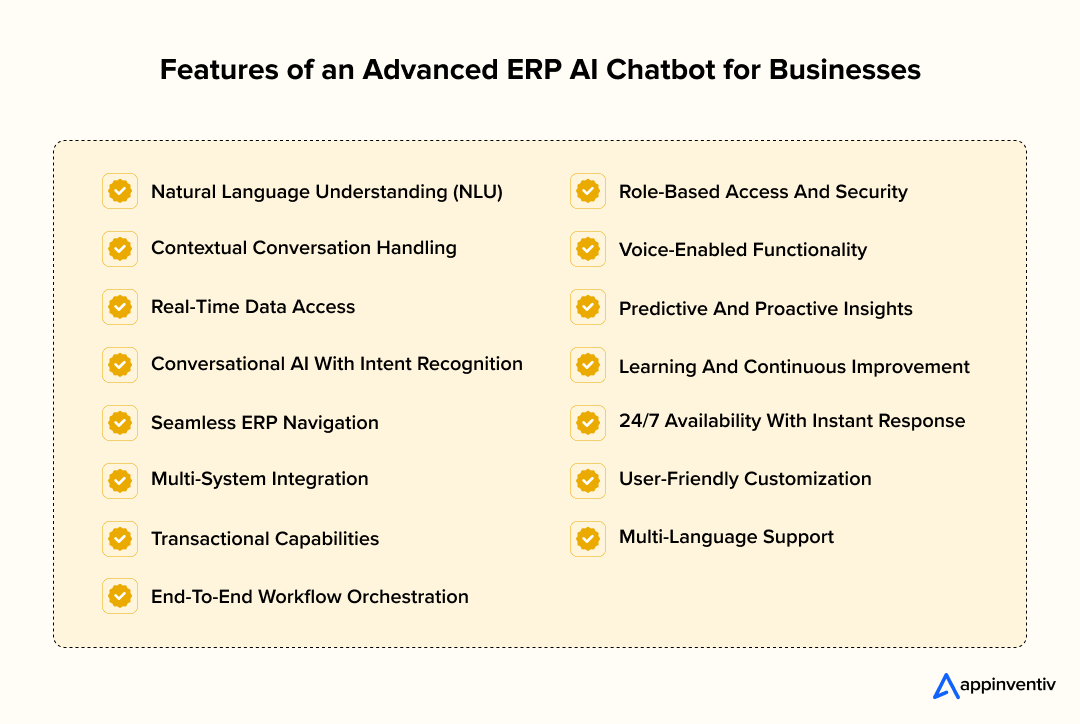
Natural Language Understanding (NLU)
Understands natural, everyday language, even when questions are phrased differently, making system interactions simple and user-friendly.
Contextual Conversation Handling
Keeps track of conversation history and ongoing tasks, allowing seamless multi-step interactions without losing context.
Real-Time Data Access
Provides instant, live access to crucial business data like inventory levels, order statuses, and financial updates.
Conversational AI With Intent Recognition
Accurately identifies whether a user is asking a question, requesting information, or trying to complete a transaction.
Seamless ERP Navigation
Guides users through complex workflows and ERP modules step-by-step, reducing confusion and the need for expert system knowledge.
Multi-System Integration
Connects effortlessly with other platforms such as CRM, HR, and supply chain management tools, enabling unified data access.
Transactional Capabilities
Processes tasks securely—like approving orders, updating stock, or submitting leave requests—directly within the chat interface.
Role-Based Access And Security
Ensures users only see and process the information they are authorized to handle, with strong access controls and secure authentication.
Voice-Enabled Functionality
Supports voice commands for hands-free system interaction, especially valuable for on-site teams in plants or warehouses.
Predictive And Proactive Insights
Sends automatic alerts and forecasts about potential issues such as low stock, delayed approvals, or financial risks.
Learning And Continuous Improvement
Learns from user interactions over time, continuously refining its responses and becoming more efficient at handling tasks.
24/7 Availability With Instant Response
Delivers instant support and data access at any time, providing round-the-clock availability for global teams.
User-Friendly Customization
Allows easy customization of workflows, user permissions, and conversation paths without requiring deep technical skills.
Multi-Language Support
Handles conversations in multiple languages, making it ideal for companies with teams spread across different regions.
End-To-End Workflow Orchestration
Automates complete workflows across departments, from approvals to escalations, improving process speed and accuracy.
Steps to Develop a High-Performance ERP AI Chatbot
ERP AI chatbot development requires careful planning, thoughtful integration, and a deep understanding of business processes. Thus, partnering with a dedicated ERP services provider like Appinventiv can ensure seamless development, smooth ERP integration, and a solution tailored to your unique business challenges. Here are the major steps to building a high-performance ERP AI chatbot.
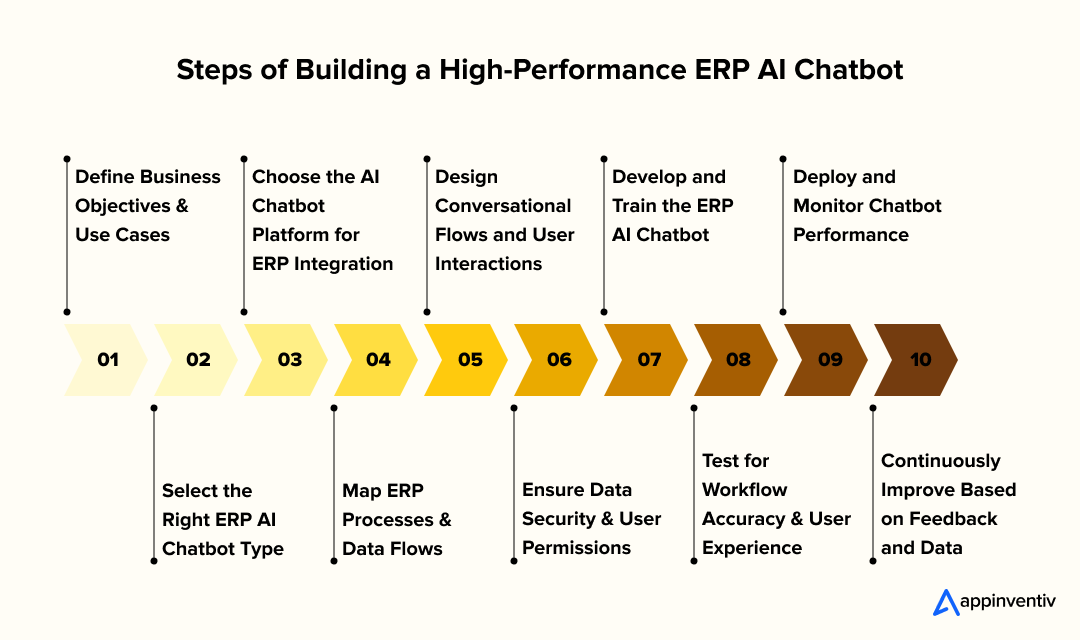
1. Define Business Objectives and Use Cases
Start by clearly identifying what you want the ERP AI chatbot to solve. Whether it’s automating ERP with AI chatbots for order tracking, simplifying invoice approvals, or handling procurement status updates, setting focused objectives will shape the entire development process. Defining specific use cases ensures the chatbot is aligned with real operational needs and not just built for generic automation.
2. Select the Right ERP AI Chatbot Type
Choosing the right type of ERP AI chatbot is critical. Businesses need to evaluate whether they need an informational chatbot, a transactional chatbot, a conversational NLP-powered chatbot, or a hybrid solution. Selecting the right type helps match chatbot capabilities with the complexity of the ERP workflows you aim to streamline.
3. Choose the AI Chatbot Platform for ERP Integration
Select an AI chatbot platform that can seamlessly integrate with your existing ERP system. Strong platform compatibility ensures that the chatbot can access ERP data in real time, handle transactions securely, and support scalability. This step is essential for successful ERP AI chatbot solutions development without major system overhauls.
4. Map ERP Processes and Data Flows
Before building the chatbot, you need to map out how different ERP processes work and where key data is stored. This ensures the ERP AI chatbot is connected to the right data sources and can retrieve or update information accurately. Detailed process mapping helps avoid broken workflows and improves overall chatbot reliability.
5. Design Conversational Flows and User Interactions
Creating intuitive conversational flows is crucial for high user adoption. The ERP AI chatbot should be designed to handle both simple queries and multi-step tasks in a natural, easy-to-follow manner. Focus on creating smooth, guided conversations that make ERP interactions feel effortless for the user.
6. Ensure Data Security and User Permissions
When building an ERP AI chatbot, security cannot be an afterthought. The chatbot must respect ERP user permissions and follow strict data access protocols. Role-based access, encryption, and audit trails should be part of the chatbot’s design to protect sensitive business information and ensure compliance.
7. Develop and Train the ERP AI Chatbot
The ERP AI chatbot development phase involves building the bot, integrating it with ERP APIs, and training it with relevant business language, workflows, and datasets. This is where the chatbot is configured to accurately process user commands, retrieve ERP data, and execute transactions correctly.
8. Test for Workflow Accuracy and User Experience
Thorough testing is essential before full deployment. You need to validate that the chatbot correctly pulls ERP data, processes transactions without errors, and handles edge cases gracefully. Testing also helps fine-tune conversational flows to make sure the user experience is smooth and intuitive.
9. Deploy and Monitor Chatbot Performance
Once tested, deploy the ERP AI chatbot across your organization and monitor its real-time performance. Track chatbot usage, response times, and error rates to quickly resolve issues and ensure that the chatbot is adding value. Continuous monitoring helps maintain system reliability and optimize chatbot responses over time.
10. Continuously Improve Based on Feedback and Data
The final step in building a high-performance ERP AI chatbot is ongoing improvement. Use chatbot analytics, user feedback, and ERP system logs to identify areas for refinement. Iterative updates help the chatbot stay aligned with changing business needs and improve overall efficiency.
Challenges of ERP AI Chatbots: What to Expect and How to Overcome Roadblocks
While ERP AI chatbots offer impressive benefits, their development and deployment can come with real challenges. Understanding these hurdles early helps businesses proactively plan effective solutions. Here’s a quick overview of common challenges and how to solve them.
| Challenge | What Is It? | Solution |
|---|---|---|
| Integration Complexity | Integrating the ERP AI chatbot with legacy ERP systems or multi-vendor platforms can be complicated and may cause data silos or workflow breakdowns. | Select the right AI chatbot platforms for ERP integration that offer flexible API support and can adapt to complex ERP environments without system overhauls. |
| User Adoption Resistance | Employees may hesitate to use new AI-powered tools, especially if the ERP AI chatbot feels difficult or unfamiliar. | Focus on ERP AI chatbot solutions development that prioritizes user-friendly conversational flows, intuitive interfaces, and guided onboarding to encourage faster adoption. |
| Limited Chatbot Capabilities | Some ERP AI chatbots may not handle complex tasks like multi-level approvals or cross-department workflows, reducing their practical use. | Clearly define use cases of ERP AI chatbot systems and build custom chatbots that align with your specific business processes instead of relying on generic chatbot templates. |
| Data Security Concerns | Automating ERP with AI chatbots involves accessing sensitive business data, which raises concerns about security breaches or unauthorized access. | Implement strict role-based access, encryption, and real-time activity logs during ERP AI chatbot development to ensure secure data handling across all transactions. |
| High Development Cost | Enterprises may worry about the initial ERP AI chatbot development cost, especially if the solution needs extensive customization. | Start with a scalable, modular development approach that focuses on high-impact use cases first and expands gradually to control costs while maximizing ROI. |
| Inconsistent Workflow Handling | Chatbots may struggle with unstructured queries or fail to follow the correct workflow if they aren’t trained properly. | Map ERP workflows in detail, provide thorough training datasets, and regularly optimize the features of ERP AI chatbot systems for better response accuracy. |
| AI Bias in Responses | AI chatbots may unintentionally reflect biased patterns from training data, leading to unfair or inaccurate responses in ERP workflows. | Use diverse, high-quality training datasets and regularly audit chatbot interactions to detect, prevent, and correct bias in ERP AI chatbot development, ensuring responsible AI that delivers fair, accurate, and unbiased support across all user interactions. |
| Scalability Challenges | As business needs grow, some ERP AI chatbots may not scale efficiently across regions or departments. | Design ERP AI chatbots with scalability in mind, using robust backend architecture that can handle multi-location and multi-language deployments. |
From messy data to complex workflows—we build it, fix it, and scale it. Effortlessly.
Future Trends of ERP AI Chatbots: What’s Next for Enterprises?
The future of ERP AI chatbots is shaping up to be faster, smarter, and more deeply integrated into core business systems. Here’s what businesses can expect in the coming years and how they can prepare to make the most of these advancements.
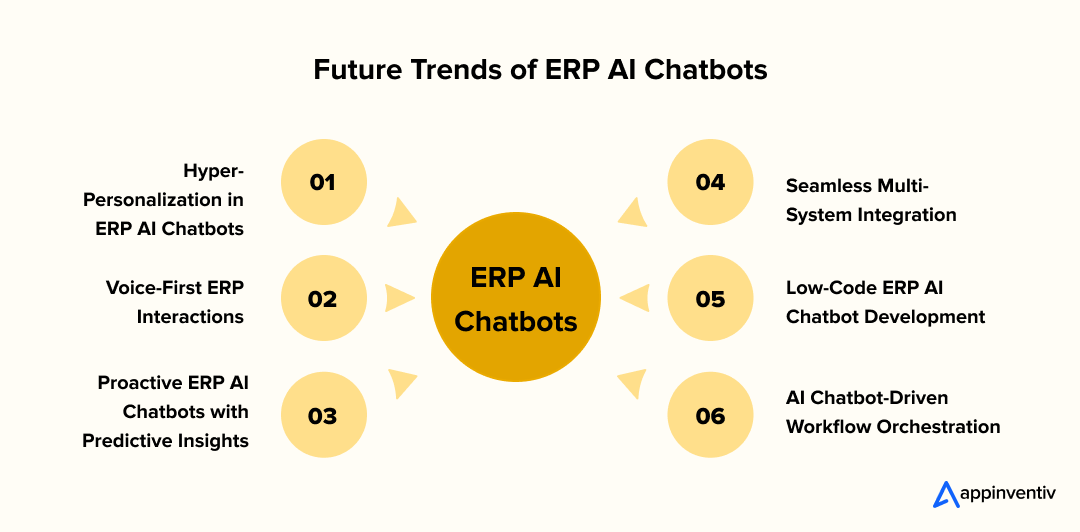
1. Hyper-Personalization in ERP AI Chatbots
ERP AI chatbots will soon deliver highly personalized responses based on user roles, past interactions, and task preferences, making ERP experiences feel tailored to each employee.
Tip:
Businesses should invest in ERP AI chatbot solutions development that supports user profiling and integrates with employee activity data to maximize personalization.
2. Voice-First ERP Interactions
Voice-enabled ERP AI chatbots will become more mainstream, allowing employees to manage ERP queries and transactions using voice commands—perfect for on-the-go operations.
Tip:
Start exploring AI chatbot platforms for ERP that offer native support for voice assistants like Google Assistant or Alexa to stay ahead in hands-free ERP usage.
3. Proactive ERP AI Chatbots with Predictive Insights
Future ERP AI chatbots won’t just respond—they’ll proactively notify users about low stock, pending approvals, or financial risks using predictive analytics.
Tip:
To leverage this, businesses should integrate ERP AI chatbots with predictive data models during ERP AI chatbot development to deliver real-time, forward-looking insights.
4. Seamless Multi-System Integration
ERP AI chatbots will evolve to connect not just with ERP systems, but with CRM, supply chain, and HR platforms simultaneously, offering a unified business command center.
Tip:
Businesses should prioritize building ERP AI chatbots with flexible API structures that can support automating ERP with AI chatbots across multiple enterprise software platforms.
5. Low-Code ERP AI Chatbot Development
Low-code and no-code platforms will make it easier for businesses to build, modify, and scale ERP AI chatbots without heavy reliance on technical teams.
Tip:
Enterprises should start considering low-code options in ERP AI chatbot development to enable faster deployment and more agile customization.
6. AI Chatbot-Driven Workflow Orchestration
ERP AI chatbots will take on more advanced workflow orchestration—handling cross-department processes, multi-level approvals, and complex task routing seamlessly.
Tip:
Businesses should map out detailed process flows early to ensure that the features of ERP AI chatbot systems can be extended to support these orchestration capabilities later.
Why Appinventiv is the Right Partner for Developing AI-Powered ERP AI Chatbots?
We hope this blog has helped you understand what ERP AI chatbots are, how they work, their key benefits, challenges, types, and what the future holds for businesses looking to automate ERP with AI chatbots. As the landscape continues to evolve, the real advantage will go to companies that not only understand these technologies but also know how to implement them the right way.
To truly unlock the value of ERP AI chatbots, businesses need to partner with a team that brings both technical expertise and industry understanding. Custom ERP AI chatbot development requires seamless ERP integration, conversational AI excellence, data security, and a scalable architecture—something only a few trusted partners can deliver effectively.
At Appinventiv, we specialize in developing ERP AI chatbots that are custom-built for your business processes. Whether you need a conversational assistant, a transactional bot, or a fully integrated ERP AI chatbot platform, we’ve developed enterprise-grade solutions that help businesses like yours automate complex workflows, improve decision-making, and reduce operational friction.
Our deep expertise AI Chatbot development services is backed by successful implementations across industries like manufacturing, healthcare, finance, and retail. We focus on building high-performance, secure, and scalable chatbots that are not just technically sound but also user-friendly. From process mapping and chatbot design to ERP API integration and long-term support, we work as your end-to-end development partner.
If you’re ready to leverage ERP AI chatbots to make your business smarter and faster, let’s connect. Appinventiv can help you build exactly what your enterprise needs to stay competitive.
FAQs
Q. How does a chatbot integrate with ERP systems?
A. A chatbot integrates with ERP systems through secure APIs, web services, or middleware that connect the chatbot to the ERP database and workflows. The chatbot can send and receive data from the ERP system in real-time, allowing it to retrieve information like order statuses, inventory levels, or financial reports. A well-designed ERP AI chatbot ensures smooth data exchange while respecting user roles and security protocols, so only authorized information is shared with the right users.
Q. How fast can an ERP chatbot be deployed for enterprises?
A. The deployment time for an ERP AI chatbot depends on the complexity of your ERP system, the type of chatbot you need, and the level of customization required. On average, a basic informational ERP chatbot can be deployed in 4 to 6 weeks, while more complex, transactional, or multi-system integrated chatbots may take 8 to 12 weeks or more. Partnering with experienced AI chatbot development teams can significantly speed up deployment without compromising quality.
Q. What are the benefits of using AI chatbots with ERP systems?
A. AI chatbots bring several benefits to ERP systems, including faster access to information, automation of repetitive tasks, improved employee productivity, and reduced manual errors. They also help make ERP systems more user-friendly by providing conversational interfaces that are easy to navigate. By automating routine interactions and delivering real-time updates, ERP AI chatbots allow employees to focus on higher-value tasks, which can improve overall business efficiency.
Q. How do AI chatbots improve ERP data quality?
A. AI chatbots improve ERP data quality by minimizing manual data entry errors and ensuring that data is captured and processed consistently across workflows. Since the chatbot pulls and updates information directly from the ERP system, it reduces the chances of duplication, missed entries, or incorrect formatting. Additionally, AI chatbots can validate data inputs in real-time and prompt users to correct mistakes immediately, helping maintain cleaner and more accurate ERP records.
Q. How do AI chatbots simplify ERP workflows?
A. AI chatbots simplify ERP workflows by allowing employees to complete tasks and access ERP data through simple, conversational commands instead of navigating complex ERP dashboards. Chatbots can automate steps like approvals, data retrieval, and transaction updates, reducing the need for system hopping or manual coordination. By streamlining these processes, ERP AI chatbot development for businesses can ultimately help them save time, reduce bottlenecks, and allow the teams to work more efficiently across departments.


- In just 2 mins you will get a response
- Your idea is 100% protected by our Non Disclosure Agreement.
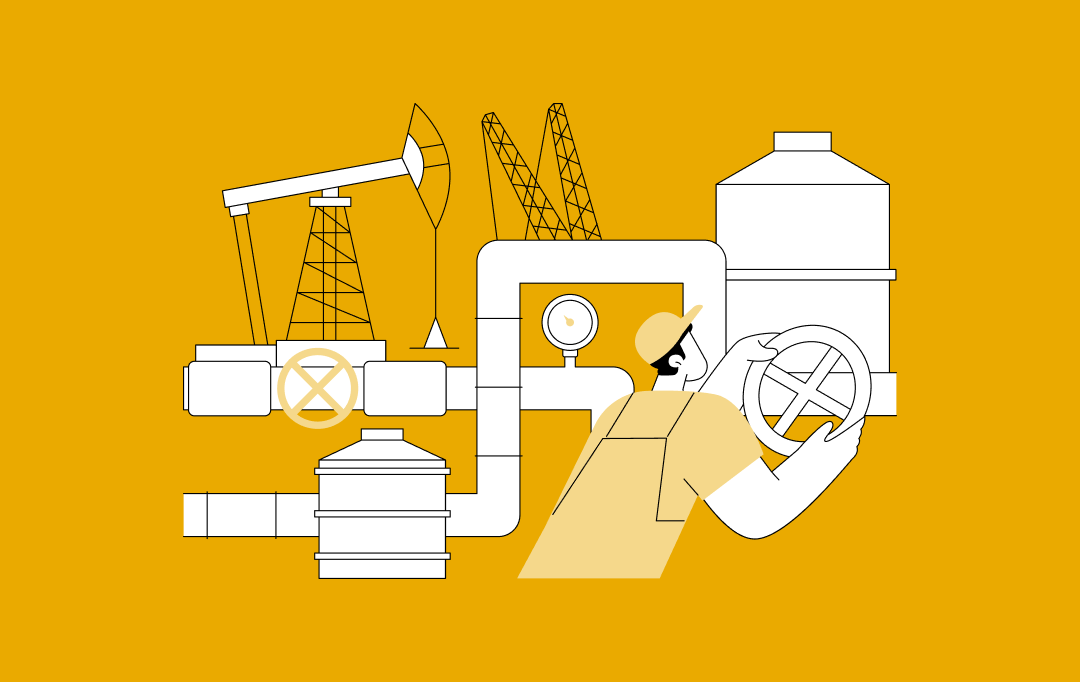
Oil and Gas ERP Software Development: Features, Benefits, Process, Integration and more
The oil and gas industry operates in a complex and volatile environment. It involves oil and gas exploration, extraction, drilling, production, and transportation. Consequently, the industry faces several challenges, such as fluctuating market demands, stringent regulatory requirements, and the constant pressure to reduce greenhouse gas emissions. Notably, oil and gas production, transport, and processing contribute…
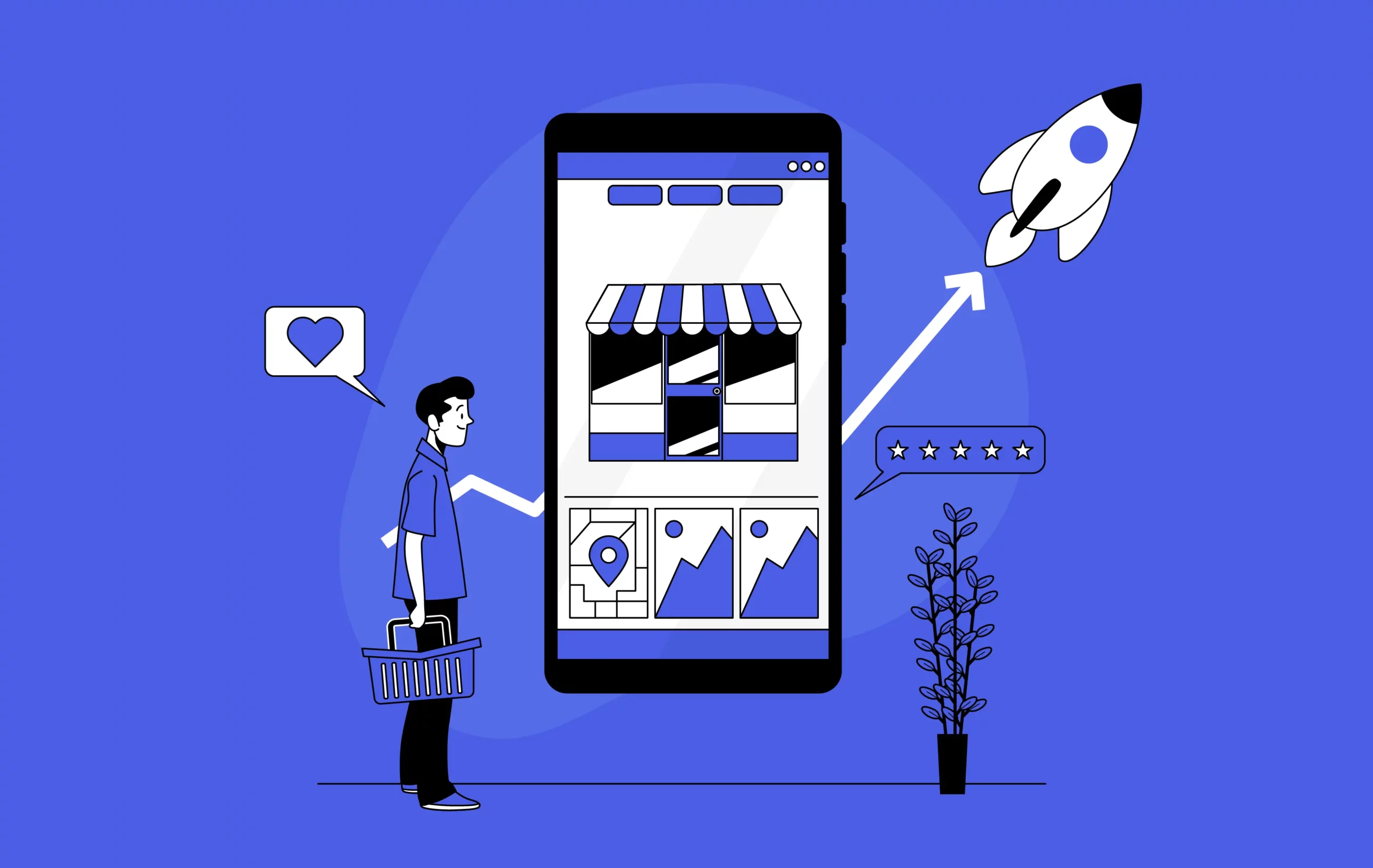
How ERP eCommerce Integration Can Help Scale Your Business to New Heights
Operating an eCommerce business is a complex process that requires effective management of multiple interconnected components. This includes various activities such as planning and allocation of resources, inventory management, internal communications, etc. What makes eCommerce operations even more challenging is that each area often operates within separate systems, having its unique set of processes. Thus,…
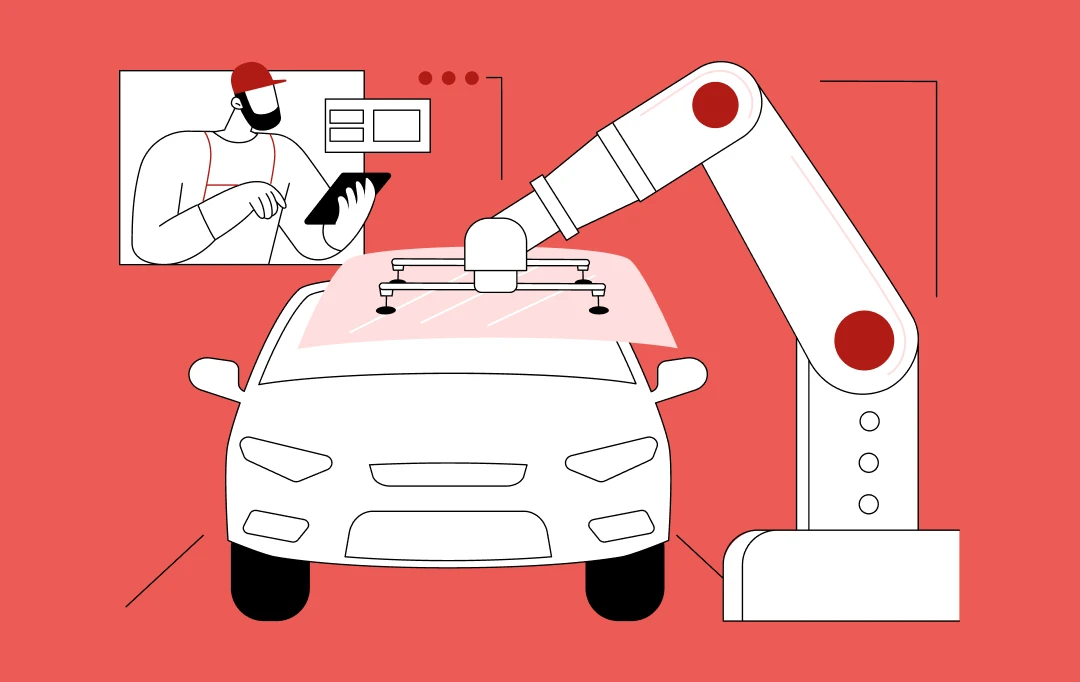
Automotive ERP Software Development: Use Cases, Benefits, & How to Build It Right
Key takeaways: Custom automotive ERP integrates key functions, boosting efficiency and decision-making. AI integration and cloud-based ERP solutions enhance scalability and predictive capabilities. Custom ERP solutions cater to the unique needs of the automotive industry, from supply chain management to compliance. ERP adoption faces hurdles like data migration and integration, which can be addressed through…







